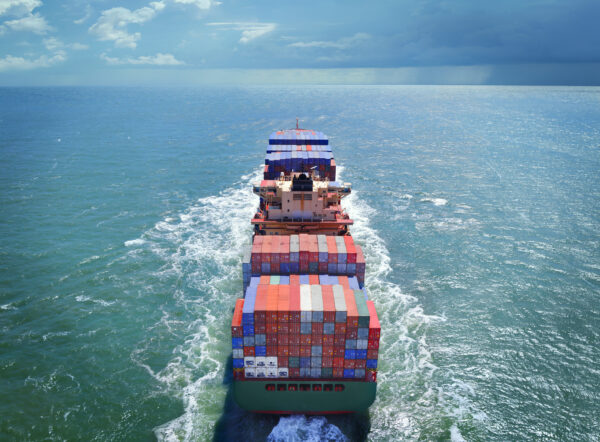Transport Update 14th April 2021
Apr 14, 2021
Scroll to find out more
Apr 14, 2021
Scroll to find out more
The Ever Given is freed – at least physically – and the backlog cleared, but the ripple effects are now starting to bite, and are predicted to continue until at least mid-May. Containers have long been in short supply, now we are starting to see equipment shortages across the whole of China as new inventory waits for the return of long-delayed equipment.
This is leading to a new wave of blanked sailings as carriers look to maintain vessel fill rates, driving rates back up levels not seen since January this year. Not only does this extend lead times on key routes at a time of high-demand from consumers, but it will also create a long term roll pool as goods outstrip capacity,
In this scenario, the main tool in shippers arsenals has to be supply chain visibility. With capacity at a premium, shippers will need to focus on moving their most in-demand SKUs and managing their journey through the entire supply chain, as well as being ready to amend plans as needed. This is also a time to work closely with your freight forwarder, providing advanced notice of your needs – we recommend booking 28 days in advance instead of the usual 21. Forwarders should also be looking out for blank sailings and offering alternatives.
| Rates | Rates remained steady in the spot market over the last month. However, premiums are common to ensure you can book space to the West Coast. Rates for the East Coast have increased as a reflection of the tight space available. |
| Capacity | Space is very short on both the West and East Coast routes. On the East Coast, vessels are reportedly fully booked until mid-May. A new service between Asia (Vietnam and Yantian) and the USEC ports of Charleston, Savannah, and Newark has been announced by 2M alliance (Maersk, MSC and ZIM). The TP23 is due to start early May and will have 10 ships deployed and transit times are expected to be 3-4 days shorter than current from Yantian to Savannah and 7-8 days shorter than current from Yantian to Charleston. |
| Equipment | The situation continues to deteriorate. The CAx Container Index indicates a continuous trend of empties accumulating in the West Coast, with the index now sitting at 0.91 this week, an increasing trend for the past 9 weeks. |
| Ports | Congestion in Los Angeles and Long Beach ports sits at 23 ships at anchor waiting to berth, with an average waiting time of 8 days. The port of Oakland being the first port of call the ships divert to from Los Angeles and Long Beach, has seen an increase in vessels waiting, having now 24 ships at anchor. Savannah saw a slight improvement having now 9 ships waiting. |
| Rates | As expected, ripple effects from the Suez Canal incident are beginning, with rates announced for the second half of April seeing a considerable increase. |
| Capacity | Several blank sailings have been announced from all the alliances. Capacity for week 15 is at least 65,000 less TEUS of space available, and for week 16 is 86,000 less TEUS. For northern China ports of Qingdao, Xingang and Dalian vessels are reported being overbooked. MSC has announced a new rail/ocean service connecting China Main ports to Continental North Europe. Another new service from China has been announced by The Ocean Alliance. This is a new 10 ships shuttle service connecting weekly China to Continental North Europe. |
| Equipment | There is a shortage of equipment reported from East China ports of Shanghai and Ningbo for Evergreen, CMA-CGM and Maersk. |
| Rates | Rates have reached an all time high with increases of 41% since the end of March as reported by Xeneta. |
| Capacity | Space continues to be a major problem. Hapag stopped bookings for one week in order to handle the backlog of volumes. All carriers are reported overbooked and vessels are full until mid-May. |
| Ports | New York has no reported vessel congestion, however the dwell time for import containers and the yard occupation are still high. Empties are being diverted to other facilities to ease up yard occupation. |

Air freight continues to be squeezed for capacity. Even as conversions ramp up, passenger airlines are predicting limited capacity until 2023 or 2024. Non-express freighter capacity went up by 22% between 8 and 21 March, year on year, while express freighter capacity rose 29%.
This is unlikely to have an impact in the short term, given the sustained high demand for IT goods alongside high demand for vaccine shipments. Given the need for temperature controlled equipment in the latter case, this has resulted in the rates soaring as this is high yield cargo.
As ports brace themselves for a large number of vessels, fresh from the Suez, more urgent shipments are expected to be transferred to airfreight, further restricting capacity.
| US | Air freight rates keep on increasing ex-SPRC due to a continued increase of project shipments i.e. vaccine and IT products shipments. PVG and NPRC are better. Space is extremely tight and there is no spot rate to JFK or LAX for dense cargo owing to some flight cancellations by Air China. |
| EU | Air freight rates have continued to increase the same as the US ex SPRC due to a continued increase of project shipments. PVG and NPRC are better. Space is extremely tight. Spot rate for either FRA or AMS is available for super dense cargo and some volumetric cargo. |
| UK | Rates keep on increasing for ex SRPC this week due to vaccine shipments to the EU increasing, as well as the high demand for IT products. PVG and NPRC are relatively stable. Transit service via AMS or FRA airport stays normal this week, but we still recommend air-air service flying into the UK directly rather than via mainland Europe. Spot rates for dense cargo are available in the market. |
| US | The market is still very tight, with little capacity and high rates. It is expected that the problems with the Ever Given in the Suez canal will have a ripple effect soon. One of the things that the US is seeing now is growing interest in Sea/Air solutions from Asia via Dubai into Europe and the US.The high rates on airfreight and huge delays on ocean freight is making this a viable alternative. |
| Outbound | Still the same problems with the UK / EU market with continued strong demand but limited capacity due to low passenger numbers, it may start to change towards Q4 as airlines start to bring their schedules back on line and we see capacity open up and rates slowly start to decrease. |
| Availability | Availability has levelled out and has remained the same for the past few weeks with generally good availability across all lanes. |
| Rates | Rates are elevated from Belgium and Spain due a shortage of trailers in the region driving prices, stemming from less demand from these regions. |
| Customs | Customs clearances are still the main bottleneck in road transportation booking, with clearances taking multiple days. |
As we head into peak season, the market will remain highly competitive, with elevated rates, tight capacity and potential for more blanked sailings. Carriers in particular have become experts at managing shocks to their system to keep control of capacity and rates. While new services are being introduced – MSC’s China-EU rail service being of particular interest for many – there is no one solution that will solve the practical challenges of unevenly distributed containers, high consumer demand and volatile health situations.
The only option for shippers is close cooperation with carriers and forwarders based on details supply chain visibility. Shippers must be able to track, prioritise and amend their plans in line with demand and the latest supply chain conditions.
The information that is available in the Weekly Market Update comes from a variety of online sources. Click below to learn more about how Zencargo can help make your supply chain your competitive advantage.

In Focus: Tensions in the Middle East continue Over the past week, tensions hav...

In Focus: A market outlook Rolf Habben Jansen, CEO of Hapag Lloyd, anticipates...

In Focus: Carriers announce GRIs in April Following the Chinese New Year holida...